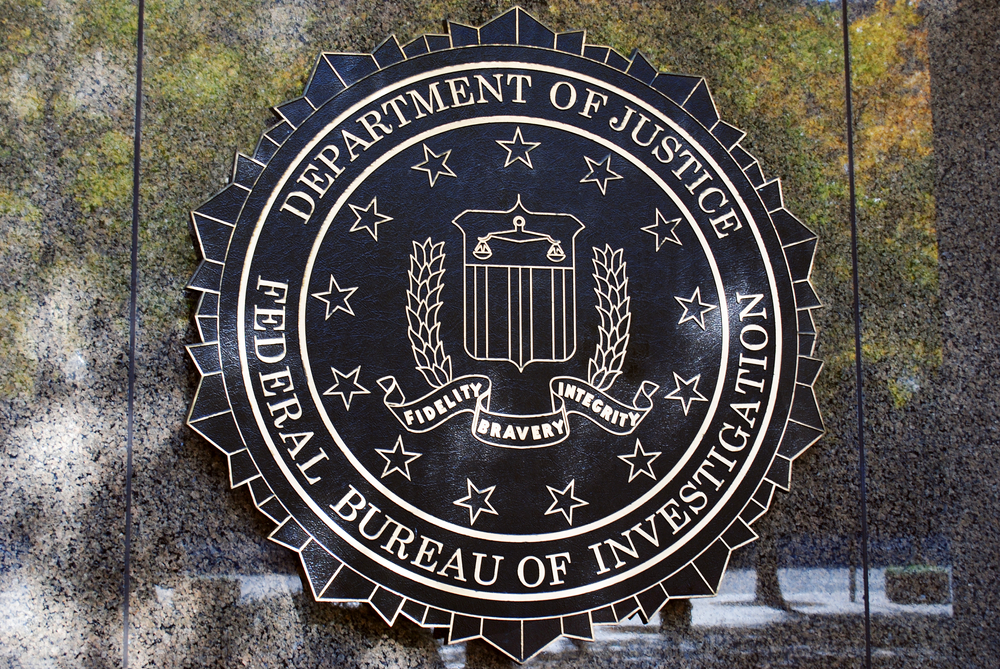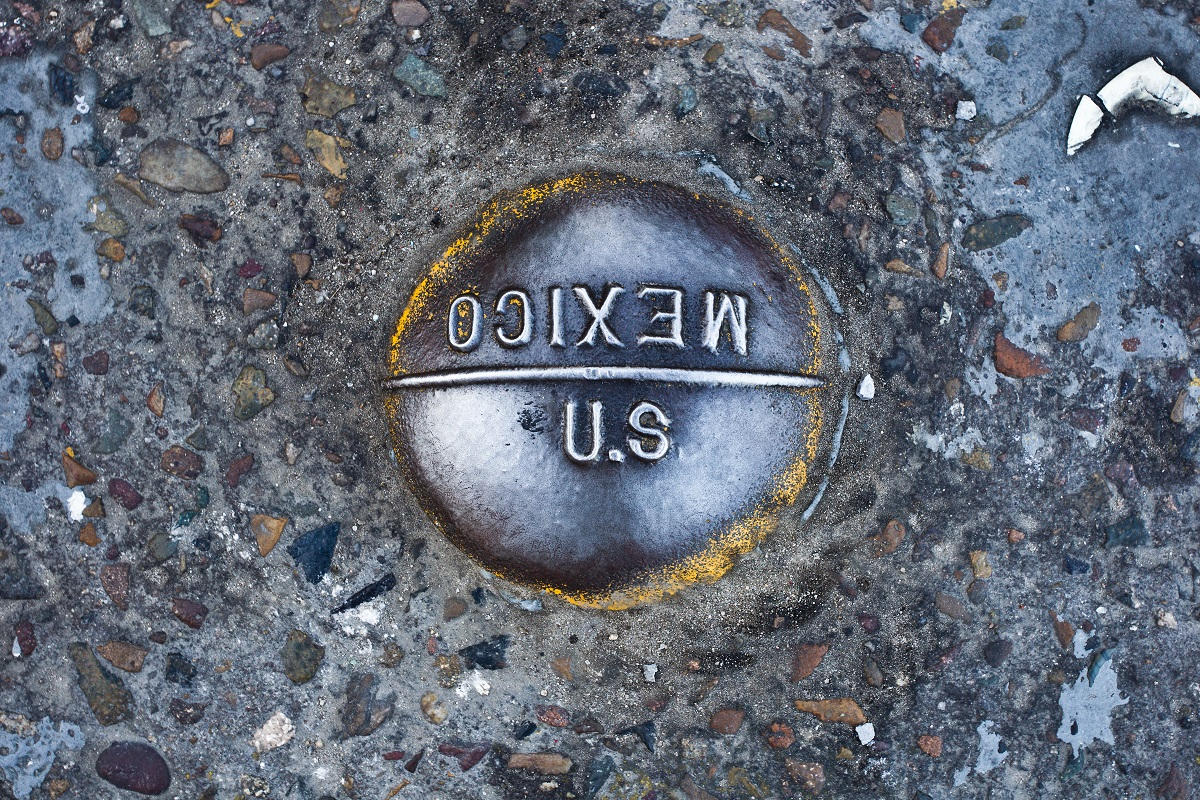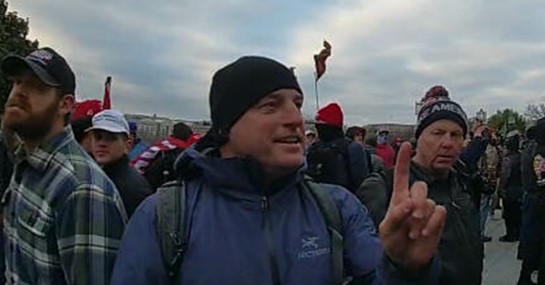
The “rule of law”—What does it mean?
For most of history since its origin in ancient Greece it has meant that the law, however it was created, rules events and relationships not the whim of the sovereign or the government.
But in this country rule of law has evolved through a gradual building process to encompass more than that—equality and certainty in enforcement and the fair and impartial adjudication of rights and liabilities.
The federal courts and the USAOs have had an unrecognized role in this process.
Today I would like to give you just a few examples of USAs and their Assistants and their contributions.
Solomon Sibley was the first USA.
In 1805 the village of Detroit burned to the ground. Sibley was the first mayor. Perhaps where we are today he walked amidst the smoking rubble and thought as one of 3-4 lawyers in the whole Michigan Territory, surrounded by swamps and wilderness, will this place ever amount to anything?
Practicing law out of your saddlebag with almost no roads was a difficult job and his path in legal matters was also a challenge. He had a couple books on English common law and every few months he could read in Eastern newspapers the legislation Congress had passed. Lawyers were expected to use what little they had to make reasoned arguments to the territorial judges in the Common House at least until it too burned to the ground.
For much of the 19th Century, the U. S. Attorneys were almost entirely on their own, with little advice from Washington. There was no Justice Department until 1870.
There were no organized federal law enforcement investigators until late in the century. There was no codified federal criminal or civil law.
As each new wave of immigrants surged across the borders, not only did these pioneers bring their own expectations for the rule of law from other states and countries, but they also wanted the law to adapt to serve the needs of frontier life. Case by case, issue by issue, the litigants and the courts constructed the foundation of the intricate rule of law we enjoy today.
George C. Bates
George C. Bates was the fifth U. S. Attorney for the District of Michigan and he served in the 1840s and 50s. Bates had great energy and perseverance during a time of change in the district.
Cheap land brought tens of thousands of farmers and tradesmen to Michigan from the Northeast as well as every country in Western Europe. Transportation and communication were revolutionized by such developments as the telegraph, daily newspapers, faster mail service, railroads and steamships.
The growing pains from these changes swelled the federal court caseloads to the breaking point.
Bates headed an expedition to the Upper Peninsula to retrieve a huge piece of pure copper which was being used as a religious object by the Chippewa Tribe.
Bates secured the revenue cutter Erie to accompany the rock through the Erie Canal to Washington, D.C. where it was exhibited in the Smithsonian Museum.
Bates lost his most famous case, the prosecution for counterfeiting and fraud of James Jesse “King” Strang, a Mormon leader living with his followers on Beaver Island.
Strang had declared himself God’s Viceroy on Earth. Bates led a team of Marines on the USS Michigan, the Navy’s first iron-hulled warship, from Detroit to Mackinac to arrest Strang and several others. The trial was a national media circus.
Strang, arguing religious persecution, represented himself and the other defendants and the jury acquitted all of the defendants.
Whatever his prowess in the courtroom, no one could doubt Bates’ pioneer lawyer spirit. After completing his term, he moved to California to practice law, then to Chicago where his law practice was destroyed by the Great Chicago Fire.
Almost broke, he became the territorial U.S. Attorney in Utah where he attempted with limited success to prosecute Brigham Young and his followers for polygamy.
The effort, however, contributed to the Church’s eventual realization that the practice would have to be eliminated before Congress would approve Utah for statehood.
Henry Billings Brown and Frank Murphy
Two members of the U. S. Attorney’s Office have become Supreme Court Justices, Henry Billings Brown and Frank Murphy. In 1860 Brown became the first Assistant U. S. Attorney in the district and he developed into a national expert in admiralty and patent law.
Unfortunately, he will always be remembered for his opinion in Plessey v. Ferguson, in which the Court upheld the separate but equal doctrine of racial segregation.
Frank Murphy’s tenure as an Assistant (1919-1921) left a lasting impact which affected him throughout his judicial career. As a trial attorney he learned the devastating effects a criminal prosecution could have on a defendant and his family but he aggressively pursued violent and professional criminal.
On the Supreme Court Justice Murphy’s opinions on labor relations and constitutional rights made significant contributions to the law.
Prohibition U. S. Attorneys
The six U. S. Attorneys and the dozen Assistants who served during Prohibition (1920-1932) deserve more than the glancing treatment possible in this speech.
Prohibition was not only a failed social experiment but one which had significant and lasting negative consequences for the nation, including massive court congestion, delayed access to the courts by other litigation, pervasive violation of the law and corruption.
Nowhere in the nation were these consequences more evident than in the Eastern District of Michigan where more than a quarter of the national enforcement budget was spent. During Prohibition Detroit went from having 1,250 bars to over 10,000. The federal district court’s annual caseload skyrocketed from about 300 to almost 3,000 cases.
Although the federal criminal justice system was not perfect during this deluge of cases and rampant crime, the Herculean efforts of Judge (and former U. S. Attorney) Arthur Tuttle and the attorneys in
the U. S. Attorney’s Office kept the system from breaking down completely.
They prosecuted corrupt law enforcement and public officials, processed the flood of cases which inundated the court, and contended with the lack of public cooperation as best they could.
The ordeal did have some positive results. Many of the office management reforms they used and the development of specialized law enforcement agencies with training and modern methods, continued after Prohibition.
John C. Lehr
The longest serving U. S. Attorney in the district was John C. Lehr. He began his term in 1936 by supporting President Franklin Roosevelt’s response to the economic crisis brought on by the Depression.
Dozens of new federal programs were instituted, and hundreds of thousands of people from Michigan participated in public works programs.
This change in the role of the federal government, particularly the Executive Branch, in American life resulted in a steady increase in litigation in federal courts. The agencies established during this period not only became a powerful force for proactive government, but also introduced modern methods of administration.
One of the reforms which changed the duties and procedures of both of these offices was the independent management of the affairs of the judiciary. The federal courts had for more than a century been assigned to the Justice Department. This was an awkward relationship. Finally Congress created the Administrative Office of U. S. Courts.
In September of 1940 shortly after Germany invaded France, Congress passed the first peacetime draft in the nation’s history. Michigan’s contribution to the industrial mobilization was so significant that it was called the ”Arsenal of Democracy.”
About ten per cent of the nation’s war spending occurred in Detroit, where 610,000 people worked in factories producing war materials. This economic boom resulted in inadequate housing, school and transportation systems, along with overt racism which culminated in mob violence in June, 1942.
John Lehr’s most personally stressful cases were a pair of capital prosecutions which brought the death penalty to Michigan for the first time since 1830. Anthony Chebatoris was the first person in the United States to be tried under the new statute for bank robbery homicide.
Chebatoris shot and killed a man in a delivery uniform because he mistook him for a police officer. As he and his partner were escaping, a dentist was drilling on a person’s teeth, he hears the commotion and sees them running down the street. The dentist grabs his rifle and through his 2nd floor window shoots dead Chebatoris’ partner.
In closing Lehr called the defendant a “brutal, ruthless killer, a sly. sneaking human beast.” The defense argued that capital punishment was a relic of the Middle Ages.
After eight hours of deliberation, the jury found Chebatoris guilty and set the punishment at death.
Under federal law an execution had to take place in the state where the crime had occurred if the state had the death penalty.
Although Michigan had abolished capital punishment for murder, until 1963 the penalty was still available for treason so the condition for the state’s venue was met and Chebatoris was hanged at the U. S. Detention Farm at Milan.
The second capital case was the prosecution in 1942 of Max Stephan, a Detroit restaurant owner, who was tried in Chief Judge Tuttle’s courtroom for treason, based on his assistance of a Nazi pilot who had escaped from a Canadian prisoner-of-war camp. At trial the government’s primary witness was Oberlieutenant Hans Peter Krug of the German Air Force. Krug strutted into the courtroom wearing his German uniform and gave the Nazi salute before testifying.
Lehr’s evidence was that Stephan had provided Krug with clothes and had gone drinking with him, ending the evening at a brothel. The next day he bought Krug a bus ticket to Chicago and took him to the station. Lehr argued that Stephan was a “blackhearted traitor if there ever was one” and the jury agreed. Judge Tuttle sentenced Stephan to death but twelve hours before the hanging was scheduled, President Roosevelt granted a request for a reprieve.
The Office’s responsibilities included several hundred Selective Service cases, the Enemy Alien Hearing
Board, military land condemnations, and other litigation in support of the war effort. By 1947 when John Lehr left the Office, both it and the district court had changed significantly.
Both offices now relied on support staff members, as well as the Clerk’s Office, to process cases efficiently.
Civil cases had increased considerably, and they demanded more time and resources from both offices.
In the criminal cases federal law enforcement agencies had expanded both in terms of the number of agents and the scope of their responsibilities.
William Merrill
William Merrill was the Chief Assistant U. S. Attorney in the 1960s under U.S. Attorney Lawrence Gubow (1961-1968). At that time southeastern Michigan was one of the most dynamic metropolitan areas in the country.
The dawning consciousness of idealism clashed with the reality of racial discrimination, poverty, and the Vietnam War. This collision meant plenty of subjects for federal litigation.
The Federal Defender’s Office, Magistrate Judges, four additional federal district judgeships—all occurred during this dynamic period. The U. S. Attorney’s Office ended 129 years of complete nondiversity with the hiring as Assistant U. S. Attorneys of three remarkable women, who would become trailblazers in breaking gender and racial barriers in the legal community as outstanding jurists, Patricia Boyle, Anna Diggs Taylor, and Geraldine Bledsoe Ford.
Merrill and Gubow also modernized the way the Office functioned: de-politicization, category specialization, the beginning of proactive investigations. The realization that drug trafficking would be the dominant federal crime for the indefinite future meant, for the first time, a significant investment of prosecution resources.
With Richard Nixon’s election, the change in administrations meant Merrill had to leave the Office.
He joined a firm in Grand Rapids as a litigator.
Ironically, Merrill would contribute to forcing Nixon to become the first American President to resign from office. The period would pose perhaps the greatest threat to the rule of law faced by the country in the 20th Century.
The White House ordered federal law enforcement to greatly expand domestic surveillance, but the President and his advisors concluded that an even more aggressive effort was needed to stifle dissent. This effort included the creation of a Special Investigations Unit group which came to be known as the Plumbers Unit because its objective was to stop information leaks by whatever means were necessary.
The first target of the White House Plumbers Unit was anti-war activist Daniel Ellsberg, who was under indictment for leaking the Pentagon Papers, a top secret study of the Vietnam War. President Nixon was said to be obsessed with discrediting Ellsberg in order to silence him and to assure his conviction.
During Labor Day weekend of 1971, under the direction of the President’s top economic advisor, John Ehrlichman, and the involvement of other White House officials, five men broke into the office of Ellsberg’s Beverly Hills psychiatrist, Dr. Lewis Fielding, to obtain damaging files on Ellsberg which could be used to discredit him.
About a year later, after the related Watergate burglary into the offices of the National Democratic Party headquarters, these events began to be the subject of media reports. Archibald Cox was appointed as Special Prosecutor. Cox chose William Merrill to direct the grand jury investigation and the prosecution of the Fielding break-in.
Although it eventually became less identifiable by the public than the Watergate case, the Fielding office case actually became the key to dismantling the Watergate scandal. The case resulted in the convictions of Ehrlichman, Charles Colson, G. Gordon Liddy and others who orchestrated the break-in.
During the investigation, Merrill faced many challenges to his grand jury investigation. A sizeable segment of the American public believed that the investigation was part of an anti-Nixon vendetta.
Nixon ordered that Cox be fired because he tried to subpoena the White House for records and tape recordings and two Attorneys General refused and resigned. After Cox’s removal was finally accomplished, it was Merrill who convinced other Assistant Special Prosecutors to remain on the job rather than resign in protest. On orders from the White House, the FBI raided the Special Prosecutor’s office, but Merrill had feared such an action and had hidden key memos essential to the investigation in a safe deposit box.
Merrill and his Assistants were ultimately successful in convicting after a trial the break-in planners andoperators. Merrill’s dedication was instrumental in ending a dark chapter of abusive actions in disregard of the law and in helping to restore integrity and public confidence in the principle that no one is above the law.

James K. Robinson
In many ways the form and function of the present day U. S. Attorney’s Office was molded during the term of Jim Robinson (1977-1980). He changed the Office in many ways that still remain today.
He re-organized the Office into Criminal, Civil, and Appellate Divisions. The Criminal Division was further divided into General Crimes, Economic Crimes and Controlled Substances Units. He formulated its press policy to conform to stricter ethical standards, established Prosecution guidelines, a pre-trial diversion program, and a Federal-State Law Enforcement Committee.
During this time period the nature of federal [rosecutions in the district was gradually changing. Drug cases evolved from high volume “buy-bust” investigations to an emphasis on “kingpin” traffickers.
Other priorities were focused on cases involving federal program fraud, political corruption and organized crime. One of the most significant of Robinson’s changes was the way investigations were selected for prosecution.
By selecting significant cases and those in areas of higher priory, federal law enforcement had a greater impact on crime problems. The objective of these changes was to meet the increased sophistication of professional criminals. This same approach continues to this day.
Perhaps Robinson’s most significant contribution was to improve the atmosphere in the workplace.
No longer was it a place where recent law school graduates went for a couple years to polish their lawyering skills.
Instead, many became career prosecutors who intended to stay on the job until retirement. Their entire perspective changed, therefore, to become more professional and long term in outlook. Training, management, and specialization became more important aspects of the Office’s mission.
Jim Robinson went on to make contributions to the progressive evolution of the law in many fields, including as a civil litigator, a law school professor and Dean, Assistant Attorney General in charge of the Criminal Division, a bar association leader.
As Chairperson of the Michigan Supreme Court Committee on the Rules of Evidence, he helped modernize and codify the evidentiary rules litigators continue to use.
He was a prolific author on Evidence and a wide variety of topics.
Conclusion
What have the United States Attorneys and their assistants and staff members contributed to the development of the rule of law in this country?
In the countless legal and factual decisions made by federal prosecutors during the 195 years the Office has existed in this district, the net effect of their efforts has been to protect the principle that every individual has a right to fair procedures and a meaningful day in court based on the law of this nation. With few exceptions, they have been independent, free from bias and have sought to do “what is right” in their cases.
The fine tuning of the rule of law is a continuing process. Justice Cardozo explained that justice is a concept which is never finished but reproduces itself generation after generation in ever changing forms.
From its austere and modest beginnings to the modern law office it is today, this process of rebirth has been the legacy of the United States Attorney’s Office for the Eastern District of Michigan.




